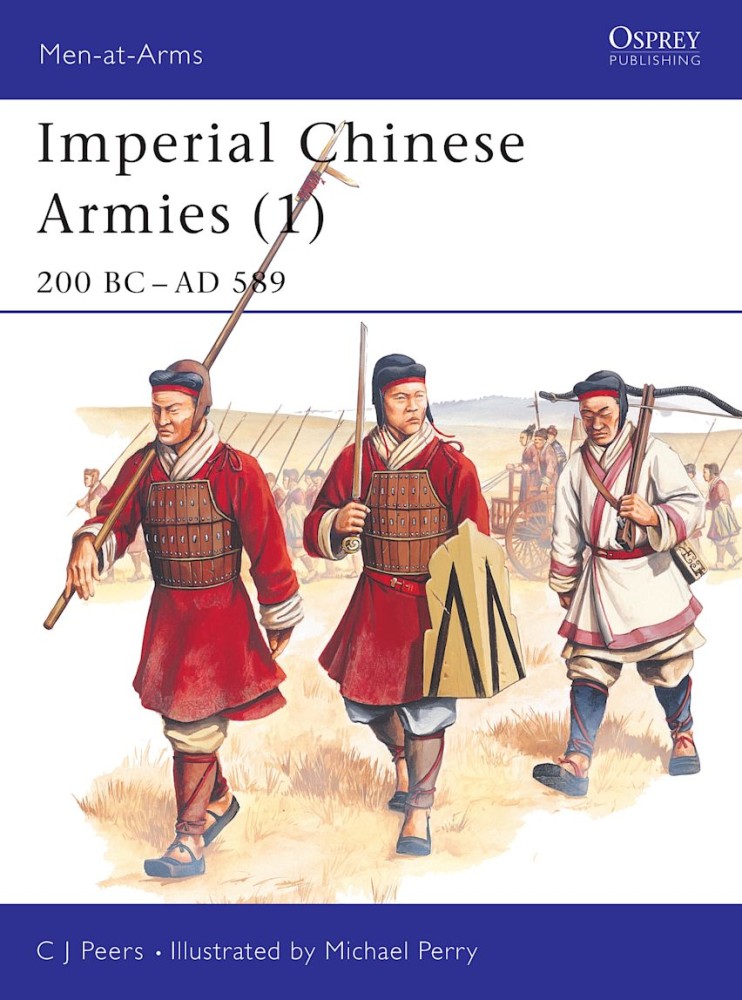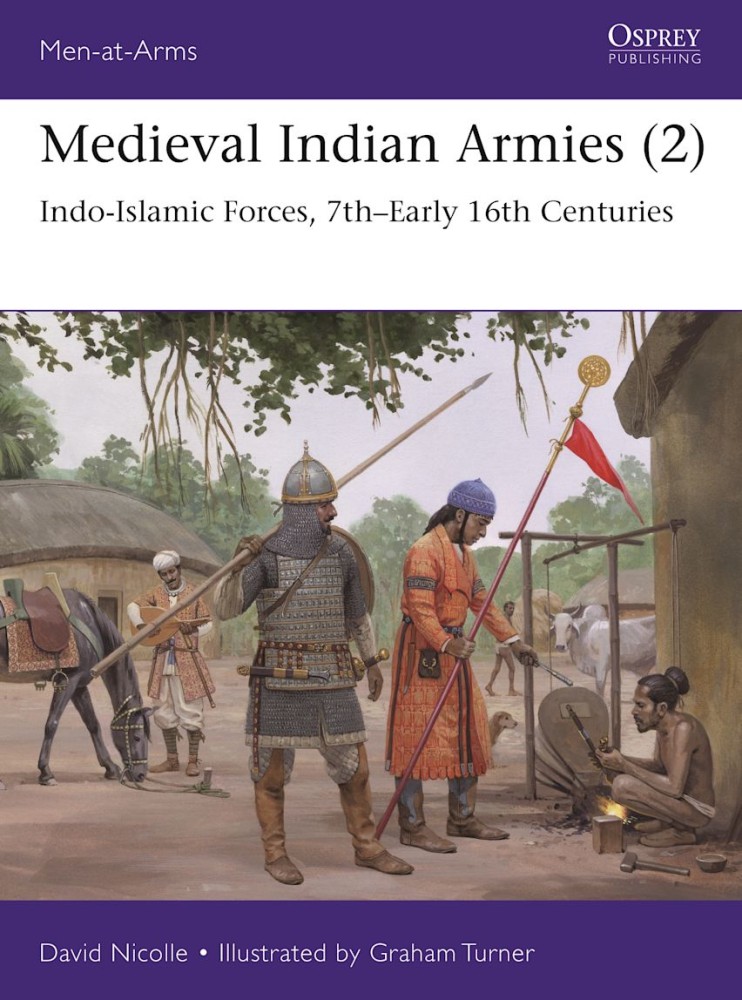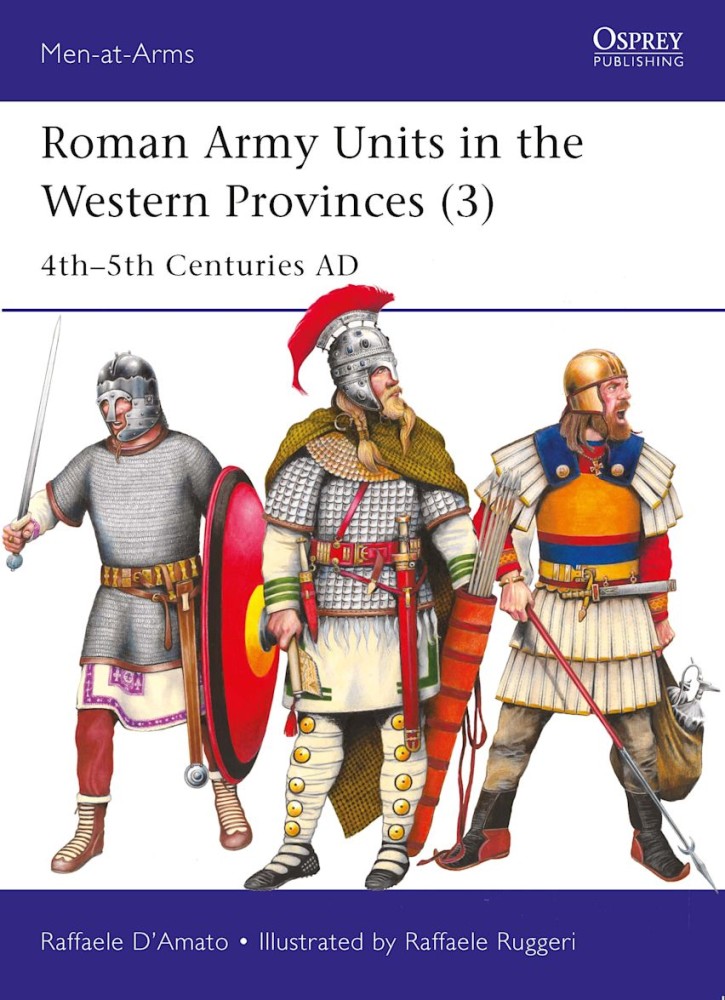After AD 304 the five 'barbarian' tribes divided north China among themselves, setting up dynasties which were often Chinese only in name, and feuding constantly both with each other and with the native states, whose stronghold was now in the south. It was under this barbarian influence that the heavily-armoured cavalry which were to become the striking force of the great T'ang dynasty in the 7th and 8th centuries first developed. In a knowledgeable text complemented by numerous illustrations, this book explores the history, weaponry, tactics and organisation of medieval Chinese armies between 200 BC and AD 589.
This illustrated study investigates the Indo-Islamic fighting men of South Asia from the 7th century AD to the Mughal conquest of the 16th century.
From 1206, much of what is now India as well as parts of Pakistan, Bangladesh and Nepal were ruled by a succession of Islamic dynasties that had their origins in the Ghurid forces that conquered parts of northern India in the 12th century. Although it was never complete, the Islamic domination of this huge region also had a profound impact upon Islamic civilization as a whole, not least in military terms, being felt as far west as Africa. Within South Asia, the war-torn medieval centuries laid the foundations for the subsequent even more brilliant Mughal Empire.
Featuring eight plates of superb artwork alongside carefully chosen photographs and illustrations, this study complements the same author's Medieval Indian Armies (1): Hindu, Buddhist and Jain. It describes and illustrates the Indo-Islamic forces operating in South Asia, from the Umayyad Caliphate's frontier in north-western India and Afghanistan in the late 7th century through to the Delhi Sultanate, the Sultanate of Bengal and the Bahmani Sultanate in the 15th and 16th centuries.
David Nicolle explains how, with respect to arms, armour, fortification and transport both on land and at sea, the widely successful Muslim armies learned a great deal from their more numerous Hindu, Jain and Buddhist opponents. This was especially evident in developments such as the use of war-elephants and the adoption of lighter, often textile-based forms of protection such as 'soft armour' made of cotton. On the other side, there would be widespread adoption of more potent weapons such as the composite bow, and considerably more sophisticated systems of cavalry warfare, among the non-Islamic forces of the Indian sub-continent. Fully illustrated, this absorbing account casts light on many centuries of warfare in South Asia.
A fully illustrated account of the large-scale reformation of the Roman Army from the reign of Diocletian to the fall of the Western Empire in AD 476.
After the 50-year chaos of the mid-3rd century AD, Emperor Diocletian (r. AD 284–305) and his successor, Constantine I (r. AD 306–37), the first Christian emperor, undertook major administrative reforms to reflect new realities and improve defensive strategy. These changes saw the Roman Army completely reorganized, with its old structure of legions and auxiliary units giving way to central mobile field armies and various classes of garrison troops. In addition, the Army also began recruiting 'allied barbarians' in ever-increasing numbers and even promoted some to the level of senior command.
Roman military expert Raffaele D'Amato draws on the latest archaeological and written evidence to explore this turbulent final period of the Western Empire. Illustrated with photographs and drawings of surviving artefacts and imagery, this latest entry in a series charting the Roman Army's evolution also features eight newly commissioned colour plates depicting the uniforms and weaponry of Rome's reformed military.



